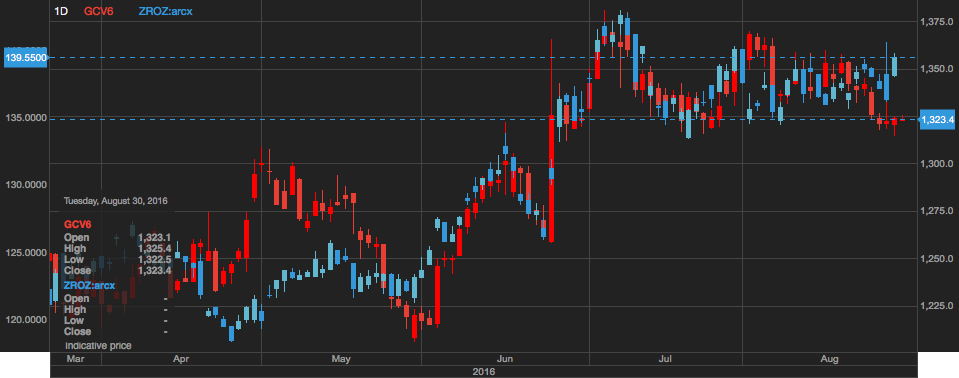By Chris at www.CapitalistExploits.at
Market dislocations occur when financial markets, operating under stressful conditions, experience large widespread asset mispricing.
Welcome to this week’s edition of “World Out Of Whack” where every Wednesday we take time out of our day to laugh, poke fun at and present to you absurdity in global financial markets in all it’s glorious insanity.

While we enjoy a good laugh, the truth is that the first step to protecting ourselves from losses is to protect ourselves from ignorance. Think of the “World Out Of Whack” as your double thick armour plated side impact protection system in a financial world littered with drunk drivers.
Selfishly we also know that the biggest (and often the fastest) returns come from asymmetric market moves. But, in order to identify these moves we must first identify where they live.
Occasionally we find opportunities where we can buy (or sell) assets for mere cents on the dollar – because, after all, we are capitalists.
In this week’s edition of the WOW we’re covering the relationship between Bonds and Commodities
As our monetary overlords swallow up more and more of the sovereign bond market, punching bonds higher, and kicking yields into negative territory, the inevitable consequences are showing themselves. Bonds are now being traded and priced in much the same way as commodities are.
To be clear: this isn’t “supposed” to happen. When traders buy a bushel of wheat they don’t do so expecting to receive a yield on it. They buy it to sell it at a higher price to the next guy.
Bonds, however, are completely different. Or at least they used to be.
Investors buy bonds (i.e. they lend money) and are then paid a set percentage fee for the lifetime of the loan, and they’re also paid the principal at the end of the loan term. The coupon or yield can be paid monthly, quarterly, annually, or capitalised and paid at maturity. That’s entirely different to a commodity. Also, we know that bonds are typically secured against assets standing ahead of other creditors in the event of liquidation and as such they’re more secure than equity.
Now, I’m not telling you anything you didn’t already know. My apologies for being really simplistic but I do it because when so little makes sense in markets, it’s probably time for us all to go back to basics, bring out the crayons, and ensure that 1 and 1 really does equal 2.
As I write to you today, bonds no longer trade on yield but on some future price.
Let’s for a minute revisit the 2008 global financial crisis.
It’s worth revisiting – for the purposes of understanding – how and why we humans do such stupid stupid things and do them repeatedly.
It’s as if we have marshmallows between our ears. If it was the case for central bankers, we’d all be better off as instead of inflicting such damage to the world economy, they’d instead be found slumped on the sofa, eyes glazed over, and drool running down their chests. Alas there are not enough marshmallows to go around and so instead we get what we get.
As I discussed a couple of months ago, the GFC was birthed in the real estate market.
Now real estate is a yield bearing investment, or at least it should be. So unless you’re buying real estate for your personal use, it is essentially a bond. It has underlying collateral value, and it provides a quantifiable and consistent stream of cashflows.
In a bull market capital chases yield first. It doesn’t chase price appreciation. Price appreciation is simply the consequence of yield chasing since yields decline as more buyers dive in.
In today’s world of bond pricing 1 and 1 doesn’t equal 2 or even 15. It is so far removed from reality that today 1 and 1 equals a chicken.
Below is spot gold in red overlaid by the PIMCO 25-year zero coupon Treasury ETF in blue. They may as well be twins.
I find this correlation fascinating but not unsurprising.

Spot gold (red) and Pimco 25-year zero coupon Treasury ETF (blue)
When bonds are being bought for capital appreciation then of course they’re going to trade like a commodity.
Just as housing in the 2000’s was increasingly bought not of yield but capital appreciation so too today we find ourselves facing the same set of circumstances.
Ten years ago, heck even five years ago, if you’d told me that we’d have over US$13 trillion in negative yielding debt, underwritten by bankrupt governments, and at the tail end of a demographic boom in developed countries – with much of that debt in Europe which is also facing a collapsing banking sector, a fragmenting European Union, and the easiest short in recent history, I’d have suggested that you’ve been smoking crack. And yet here we are.
Contributing Factors
Central banks completely and totally have your back when investing in government bonds. Why?
Letting rates normalise by any meaningful amount would cause severe problems for governments to actually service debt payments. They would all suddenly look very Greek. And though the Greeks have a cool sounding accent, lovely beaches, and don’t pay their taxes nobody really wants to be Greek.
So even though core inflation seems to be rising in the US, it’s completely meaningless. Because even if inflation was raging, the resulting real adjustment in debt and the serviceability of it due to inflation would take some time to reach anything resembling manageable before the Fed could conceivably hike rates by a meaningful amount. They simply can’t afford to.
————————————–
————————————–
So the central banks have your back on the long sovereign bond trade. That is obvious.
I can see why owning bonds makes sense based on having a central bank “put”. In fact, I’ve even suggested a few months ago that trading (not investing) by selling the Spanish ten year while going long the US ten year provided a great arbitrage as the inevitable discrepancy would get re-priced.
To be clear, that’s a short term opportunistic trade and I wouldn’t want to put something like that on and go on holiday for 6 months. I’m not getting paid enough to take duration risk on something like that.
What to Watch For
So when bonds, which are traditionally bought for safety and yield, provide neither and trade just like gold is it maybe, just maybe time to buy the asset which is traditionally bought purely for safety and offers no yield?
What I believe is a critical chart to watch is the chart I posted above. That of bonds and gold. When we see these diverging then the probability is higher that the belief in central banks is finally failing. Interestingly the only way for these two asset classes to move in tandem to the upside is if bonds continue to go into deeper negative yielding territory.
If you think about that for a minute it means that the cost of owning bonds becomes increasingly more expensive, surpassing the cost of owning gold. On a relative basis gold becomes cheaper to own even while its rising in value. Something for you to ponder.
And so…
Something else? Share your thoughts in the comment box here.
Know anyone that might enjoy this? Please share this with them
Investing and protecting our capital in a world which is enjoying the most severe distortions of any period in mans recorded history means that a different approach is required. And traditional portfolio management fails miserably to accomplish this.
And so our goal here is simple: protecting the majority of our wealth from the inevitable consequences of absurdity, while finding the most asymmetric investment opportunities for our capital. Ironically, such opportunities are a result of the actions which have landed the world in such trouble to begin with.
– Chris
“Ten years ago, the notion that zero-coupon perpetual securities should make a comeback seemed like a good April Fools’ joke. Now, it’s no laughing matter.” — Edward Chancellor
————————————–
Liked this article? Don’t miss our future articles and podcasts, and
get access to free subscriber-only content here.
————————————–
The post Gold and Bonds appeared first on crude-oil.top.

